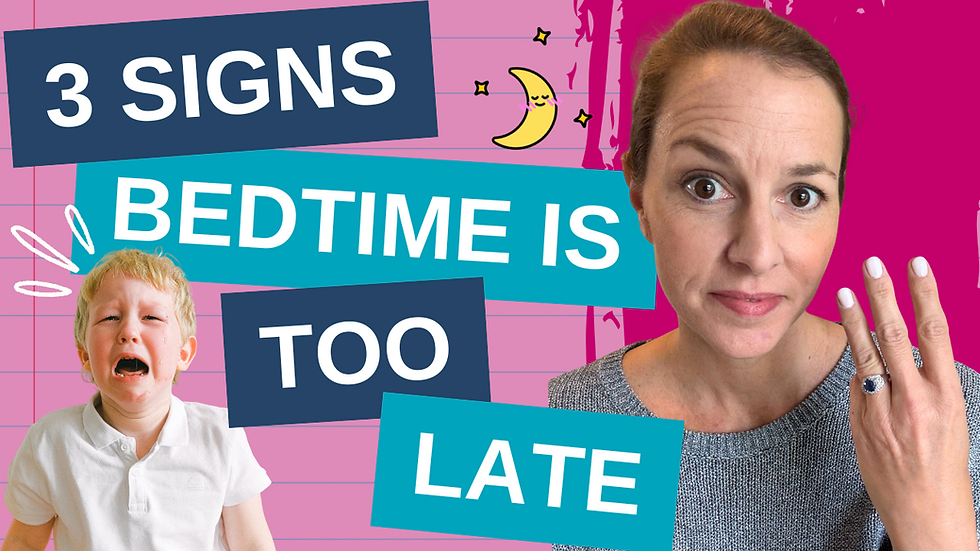Stop Bedtime Stalling
- Jessica Berk

- 4 days ago
- 4 min read
If bedtime feels less like a cozy routine and more like a nightly hostage negotiation, you’re not alone—and you’re in the right place.
Sure, you expected toddler bedtime to have its challenges. But you probably didn’t picture this: last-minute bathroom trips, desperate snack requests, and deep questions like, “Mommy, why are there clouds?”—all conveniently timed for 8:37 p.m.
What should be a calm, winding-down ritual has turned into a full-on standoff where your toddler seems to hold all the power.
Today, we’re digging into the world of bedtime stalling—what’s really driving it, why it spirals so quickly, and most importantly, the strategies that actually work to stop it.
Here’s the truth: bedtime stalling isn’t something your child will just “grow out of.” It’s a learned behavior. And the best part? That means it can be unlearned—with calm, confident steps that get everyone back to peaceful evenings (yes, even you).
The real reasons your toddler stalls at bedtime
Bedtime stalling is that magical moment when your toddler suddenly becomes very interested in anything except actually going to sleep. Sometimes it starts before you’ve even said “bedtime,” and other nights it kicks in just when you think you’re in the clear.
It usually sounds like:
“Read me one more book!”
“I’m hungry…”
“My PJs are itchy.”
“Wait—I need to tell you a secret!”
Here’s the thing: it’s not random. It’s strategic.
Toddlers test boundaries because they’re wired to. When you say, “This is the last book,” and they counter with, “Just one more?”—that’s boundary testing. Whether it comes wrapped in sweetness or full-on tears, it’s not manipulative and it’s not “bad behavior.” It’s simply how kids figure out how much control they have and how the world works.
The real challenge comes when our response isn’t clear or consistent. If asking for an extra book worked last night, why wouldn’t they try again tonight? And if that works, what else might? From their perspective, bedtime starts to look negotiable.
And honestly, there’s a layer of good old-fashioned FOMO, too. Your toddler knows you’re not going to bed right away, and they’d much rather stay up with their favorite person (that’s you). To them, sleep feels boring compared to being with you.
This is how the cycle begins: by the end of the day, we’re tired and just want bedtime over with. So we say yes to “just one more thing” to keep the peace. But every extra book, sip of water, or delayed goodnight gives them a little more power over bedtime—and before you know it, the whole process is dragging out 45 minutes or more.
But the thing is, sometimes stalling isn’t just about control—it can also show up because of toddler bedtime routine problems, like too much stimulation before bed or an inconsistent schedule.
The 3 biggest mistakes that make bedtime stalling worse
Mistake #1: Inconsistent bedtimes
The more consistent you are with bedtime, the easier it becomes for your toddler’s body to settle down. Think of it like their internal clock—it works best on a predictable schedule. Find your child’s natural sleep window and stick to it within about 15 minutes. The more “set” bedtime is, the less wiggle room there is for stalling. (And if you’re not sure how to spot your toddler’s sleepy cues, I’ve got other videos that walk you through it!)
Mistake #2: Giving in to “Just one more…”
It seems harmless, right? “What’s the harm in one more story?” But here’s the thing: to your toddler, that’s proof that bedtime is negotiable. One more story easily turns into two… then three… and suddenly it’s 9:00 p.m. and you’re still negotiating. Toddlers thrive on predictability—even when they resist it—because routine makes them feel safe and secure.
Mistake #3: Letting exhaustion call the shots
I get it. After a long day of work, dinner, dishes, and life, you’re running on empty. Saying “Fine, just one more book” or “Fine, come sleep in my bed” feels easier in the moment. But in reality, it hands over all the power and guarantees tomorrow night will be just as tough. And let’s be real—bedtime is way too important to leave in the hands of a 3-year-old.
A simple 3-part routine to end bedtime stalling
Part 1: Set clear expectations (before bedtime even starts)
Before the evening routine begins, let your toddler know exactly what to expect: “After bath, we’ll brush teeth, read two books, snuggle for five minutes, then it’s lights out.” When kids know the plan—and see you stick to it—they feel safe and secure. Will this erase stalling on Night #1 after months of pushback? Probably not. But stay consistent, and over time the predictability works like magic.
Part 2: Use a visual routine chart
Toddlers are visual learners, so a simple chart with pictures of each step (bath, PJs, books, bed) can be a game-changer. Let your child be the one to announce what comes next—it gives them a sense of control and makes bedtime feel like teamwork instead of a nightly showdown.
Part 3: End with connection
So much stalling is really about wanting “just one more” minute with you. Instead of letting that drag on, build connection right into the routine. Five minutes of snuggling, a shared bedtime mantra, or even a silly handshake can fill their connection cup and signal: we’ve had our special moment—now it’s time for sleep.
Here’s the big thing I hope you learned today: bedtime stalling isn’t about snacks or stories. It’s about boundaries and connection. When you lead with calm, consistent confidence, your toddler will follow.
.png)




Comments